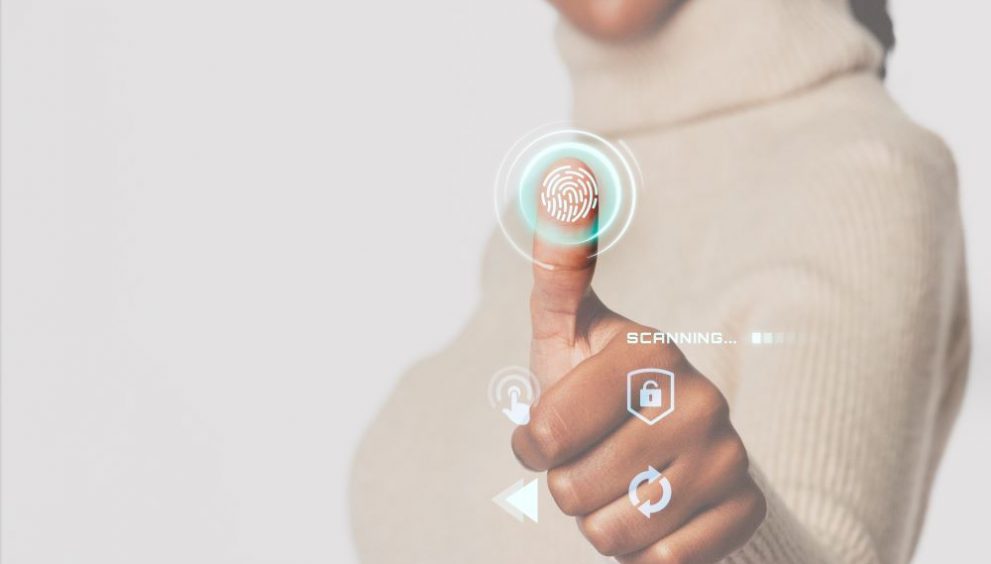Biometric authentication, using unique physical characteristics like fingerprints and facial features, has rapidly become a popular way to secure devices and accounts. These methods are convenient and offer a high level of security, as biometric data is much harder to steal or guess than a password. However, as the use of biometric authentication grows, so do the threats and attacks targeting these systems. Protecting your sensitive biometric information is critical to preventing identity theft and unauthorized access.
What is Biometric Authentication?
Biometric authentication is a security process that relies on the unique biological characteristics of individuals to verify their identity. Some common examples include:
- Fingerprint authentication: Uses the unique pattern of ridges and valleys on a fingertip
- Facial recognition: Analyzes the shape, spacing, and contours of facial features
- Iris scanning: Maps the intricate patterns in the colored ring of the eye
- Voice recognition: Identifies the unique pitch, cadence, and tone of a person’s voice
Biometric verification works by first capturing a sample of the biometric data, such as taking a picture of a face or scanning a fingerprint. This sample is then analyzed to extract key features, which are transformed into a digital template. When a user attempts to access a system or device, their biometric data is captured again and compared to the stored template. If there is a match, the user’s identity is verified and access is granted.
The use of biometric authentication has surged in recent years, driven by the adoption of biometric authentication systems in smartphones, laptops, and other devices. Many mobile payment and banking apps now allow users to sign in or authorize transactions with a fingerprint authentication or facial scan. Beyond consumer devices, biometric security systems are increasingly used in airports, workplaces, and high-security facilities.
Suggested read: Remote Working: How to Ensure Online Safety?
Common Types of Attacks on Biometric Authentication
Despite the security advantages of biometrics over passwords, these systems are not immune to attacks. Hackers have devised a range of methods to trick biometric authentication systems and steal sensitive data:
- Presentation Attacks: These involve presenting a fake biometric to the sensor, such as a photo, mask, or artificial fingerprint. High-resolution images of faces and fingerprints can be used to fool some sensors.
- Biometric Data Theft: If biometric templates are not securely stored, hackers may attempt to steal this data and sell it on the dark web or use it for identity theft. In a worst-case scenario, a person’s biometric identity could be permanently compromised.
- Replay Attacks: An attacker intercepts biometric data during transmission between the sensor and database, then replays it later to gain unauthorized access. This highlights the importance of end-to-end encryption for biometric data.
- Biometric Malware: Malicious software designed to harvest biometric data from infected devices, such as swiping fingerprint scans or capturing facial images using the camera and microphone.
- Cloud Breaches: Many biometric systems store data in centralized cloud servers. A breach of these databases could expose millions of sensitive biometric records.
The Risks of Biometric Data Compromise
The consequences of a biometric data breach can be severe. Unlike passwords which can be easily changed, biometric characteristics are inherent to an individual and cannot be altered if compromised. A fingerprint scam or facial recognition breach could enable an attacker to persistently steal a victim’s identity and commit fraud across multiple platforms.
Consider these disturbing scenarios:
- A hacker steals your fingerprint authentication data, creates a fake rubber fingerprint, and uses it to access your bank accounts, personal files, and secure areas.
- Facial images scraped from social media are used to create 3D models and trick facial recognition systems, enabling account takeover and fraud.
- Voice recordings captured surreptitiously are used to generate fake voice commands and control smart assistants or gain unauthorized access.
- Cybercriminals sell databases of fingerprints, facial scans, and iris patterns on the dark web to nation-state hackers and identity thieves.
How to Protect Fingerprint Authentication and Face ID
Fortunately, there are steps both individuals and organizations can take to protect their biometric data and mitigate the risks of biometric fraud:
For individuals:
- Enroll biometrics only on trusted devices and platforms with strong security reputations. Avoid using biometrics on shared or public devices.
- Protect your devices with strong passwords in addition to biometric authentication. Use biometric 2 factor authentication when available.
- Be cautious about sharing facial images, fingerprint scans, or voice recordings online or with unfamiliar apps and services.
- Keep your devices’ operating systems and apps updated to ensure the latest biometric security features and patches are active.
- Consider using advanced security solutions like Quick Heal Total Security that offer malware protection, safe browsing, and biometric fraud detection capabilities.
For organizations:
- Follow biometric data security best practices, including end-to-end encryption, secure storage of biometric templates, and regular patching of biometric authentication systems.
- Implement robust presentation attack detection (PAD) and anti-spoofing measures to prevent fake fingerprint and facial recognition attacks. Techniques like liveness detection, multimodal biometrics, and AI-based anomaly detection can help.
- Use decentralized approaches where possible, matching biometrics on-device rather than in a central database. This reduces the risk of large-scale data breaches.
- Provide clear notice and obtain informed consent from users before collecting or sharing their biometric data. Follow relevant regulations like GDPR and BIPA.
- Have an incident response plan to promptly notify affected individuals and remediate damage in the event of a biometrics hacking incident or breach.
Also read: How AI-Powered Malware is Outsmarting Traditional Security
Emerging Solutions and Technologies for Biometric Security
As biometrics hacking threats evolve, so too must our approaches to securing biometric systems. Cutting-edge technologies and innovative solutions are being developed to bolster biometric security and combat fraudsters:
- Multimodal Biometrics: Combining multiple biometric modalities, such as requiring both a fingerprint and facial scan, can significantly reduce the risk of spoofing and false acceptance.
- Behavioral Biometrics: Analyzing patterns in how a person interacts with their device, such as typing rhythm, mouse movements, and app usage, can provide a continuous form of biometric verification.
- Biometric Cryptography: This approach securely binds a digital key to a biometric characteristic, so that the key is only accessible when the correct biometric is presented. This adds an extra layer of protection to biometric authentication.
- Adversarial Machine Learning: Using AI to generate and test spoofed biometric samples can help identify weaknesses in sensors and matching algorithms. This “offensive” approach helps develop more foolproof security.
- Liveness Detection: Techniques like analyzing blood flow, 3D depth, blinking, and other signs can distinguish a real, live biometric from a fake replica. This is crucial for preventing biometric scam attacks.
- Blockchain Biometrics: Storing biometric templates on decentralized blockchains rather than centralized databases can enhance security and give users more control over their data.
Also read: AI and Cybersecurity: An Unbeatable Match!
Spot and Avoid Digital Threats
The rise of biometric authentication has brought both immense security benefits and new risks. Protecting biometric data is a shared responsibility between individuals, organizations, and technology providers. By implementing rigorous security controls such as Quick Heal Total Security, utilizing advanced anti-spoofing techniques, and staying abreast of emerging threats, we can harness the power of biometrics while mitigating the risks.
The road ahead will be challenging, as biometric fraud techniques grow in sophistication, but with ongoing vigilance and innovation, we can realize a future where our unique biological identities are a secure key to the digital world. The stakes are high, and the task is urgent – the fight to protect biometric security has only just begun.



